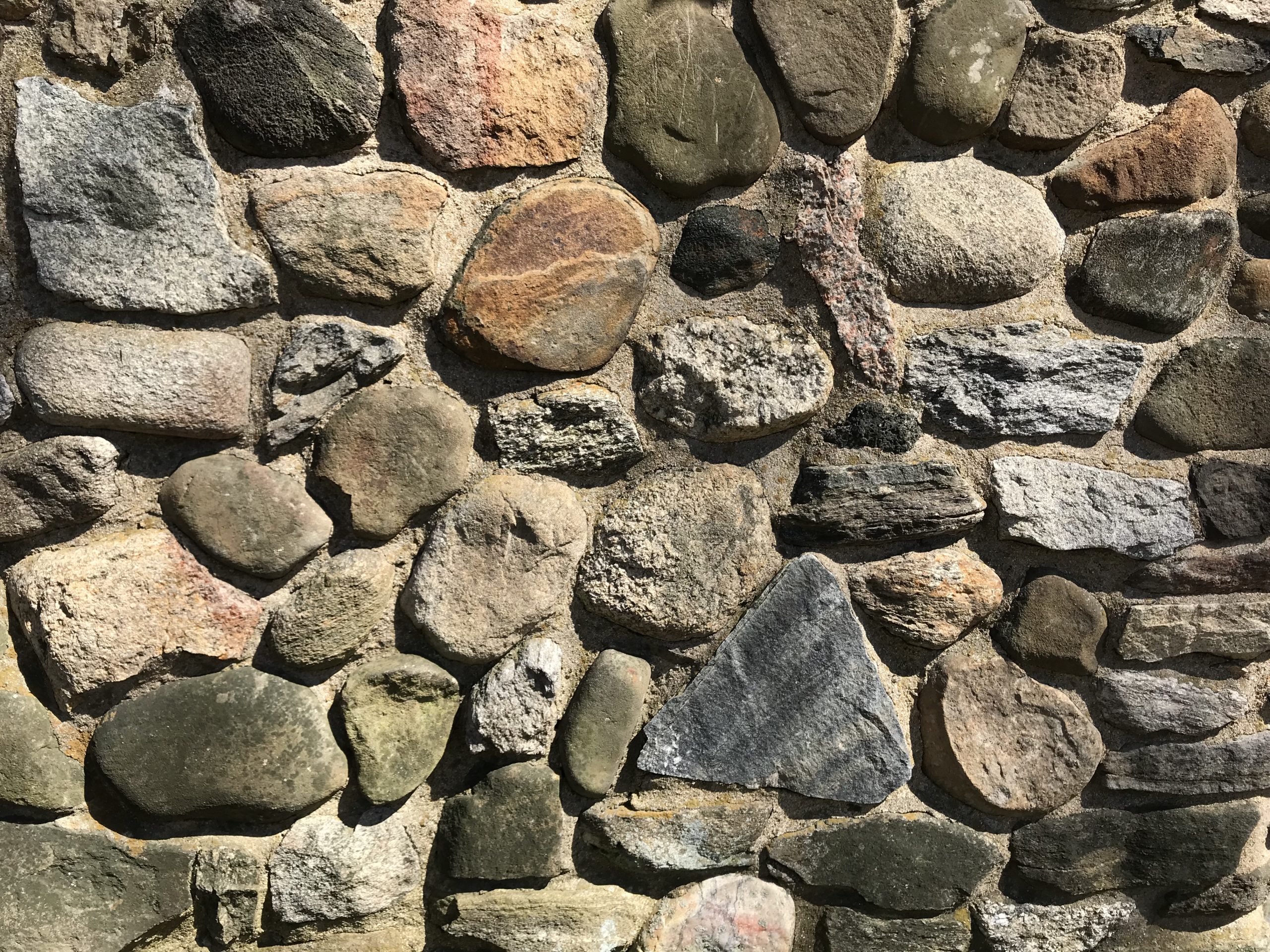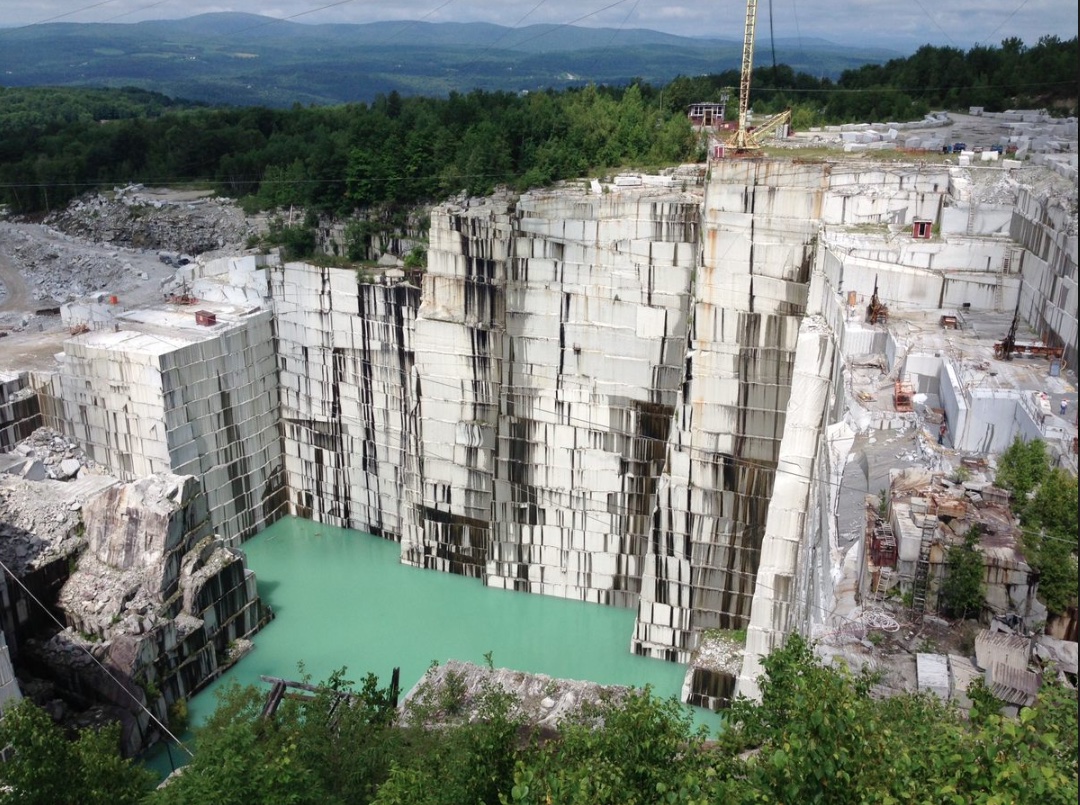The Stone Pavilion Project
Natural Resources

Within the exhibit are stones known for their value as natural resources. Below is a preliminary mention of nine specimens, each tagged to an important human use.
Exterior - New England Fieldstone
The famed stone walls of New England are built of the same stones used to construct the exterior of the stone pavilion. In this story, jagged fragments of rock that were quarried from bedrock by the Laurentide Ice Sheet, which slid southward over the region between about 40,000 and 15,000 years ago. After being incorporated, these quarried fragments were milled into more rounded boulders as they rolled and collided in the shear zone between rock and ice. When farmers cleared the land of trees, the stones heaved upward to become an abundance of waste stone. The solution to that problem was to scuttle the stone sideways into useful boundary markers and fences.
Link to UConn's Department of Natural Resources and the Environment
Interior - Other Useful Rocks
Within the interior of the stone pavilion are examples of precious metal ores, quality building stones, and a sample of the most important aquifer on the U.S. high plains.
-
-
METAL ORES: The silver ore from Montana (#24), the pegmatite vein from South Dakota (#39), and a variety of rocks from other western states western states provided much of our nation's mineral wealth between the California Gold Rush in 1849 and the mid 20th century. Out technology is utterly dependent on such materials. Note: this specimen was correctly identified in the Hartford Courant summary in as "silver bearing ore,"suggesting that the silver may have been visible, which it is not today.
-
AQUIFERS: The Ogalalla Aquifer of the American high plains from Texas to North Dakota filled with rainfall and snowmelt during pluvial conditions that coincided with glacial times. A large part of our nation's agricultural wealth depends on this porous sandstone aquifer which is rapidly being depleted, pumped as if it were oil. Our specimen of this rock is from Nebraska (#25), is barely held together by precipitated lime in the called caliche.
-
GRAVE MARKERS: The uniform gray granite from the Rock of Ages Quarry in Barre, Vermont (#43) is reportedly more intensely used for gravestones than any other in the nation. It crystallized slowly underground as part of the new Hampshire Plutonic Suite during the Devonian Period about 364 million years ago, In the Anthropocene Epoch, the stone is being cut and distributed throughout the nation.
-
BUILDING STONE: Called dimension stone, some rock can be accurately cut into uniform blocks of whatever dimension is being sought. Samples in the exhibit include the following examples. Salem Limestone (#12) (or a similar formation) from Indiana, one of the most famous stones in the world, used below the Statue of Liberty. Quincy Granite (and related quarries) (#19), the rock quarried for the Bunker Hill Monument, the transport of which created the nation's first railroad 1826). Texas Pink (#41) from the Llano uplift of central Texas. This rock was used to build the State House of Texas and the Galveston Sea Wall, which saved the city as a commercial port, and which helped protect the city against the US's most destructive hurricane in 1900. Crab Orchard Stone (#40) from Tennessee is, because of its unusual stability and easy of quarrying, is widely used, most notably in the Country Music Hall of Fame in Nashville. Aztec Sandstone from Nevada (#26), a lithified sand dune, was widely used for buildings in San Francisco and Los Angeles.
-
